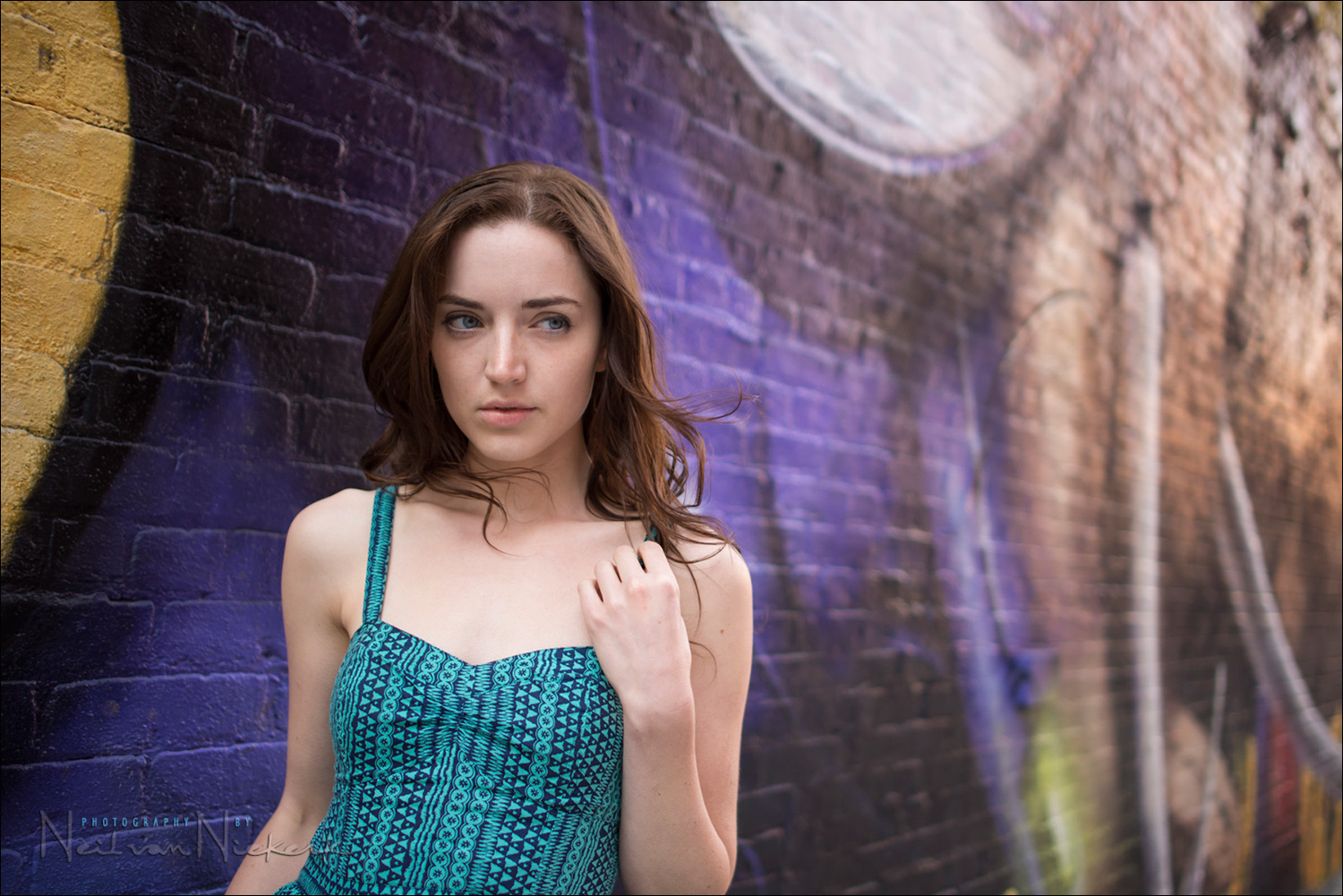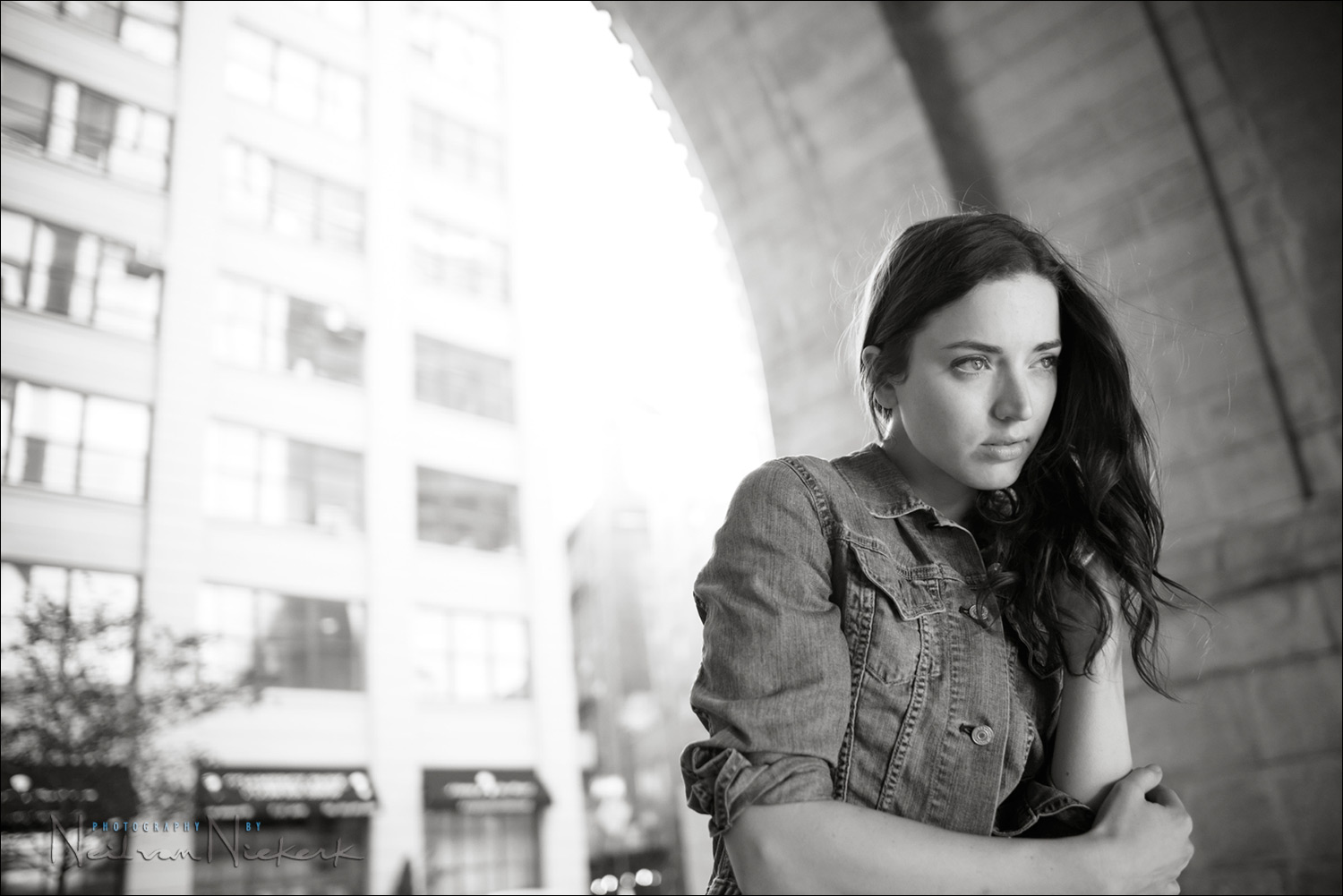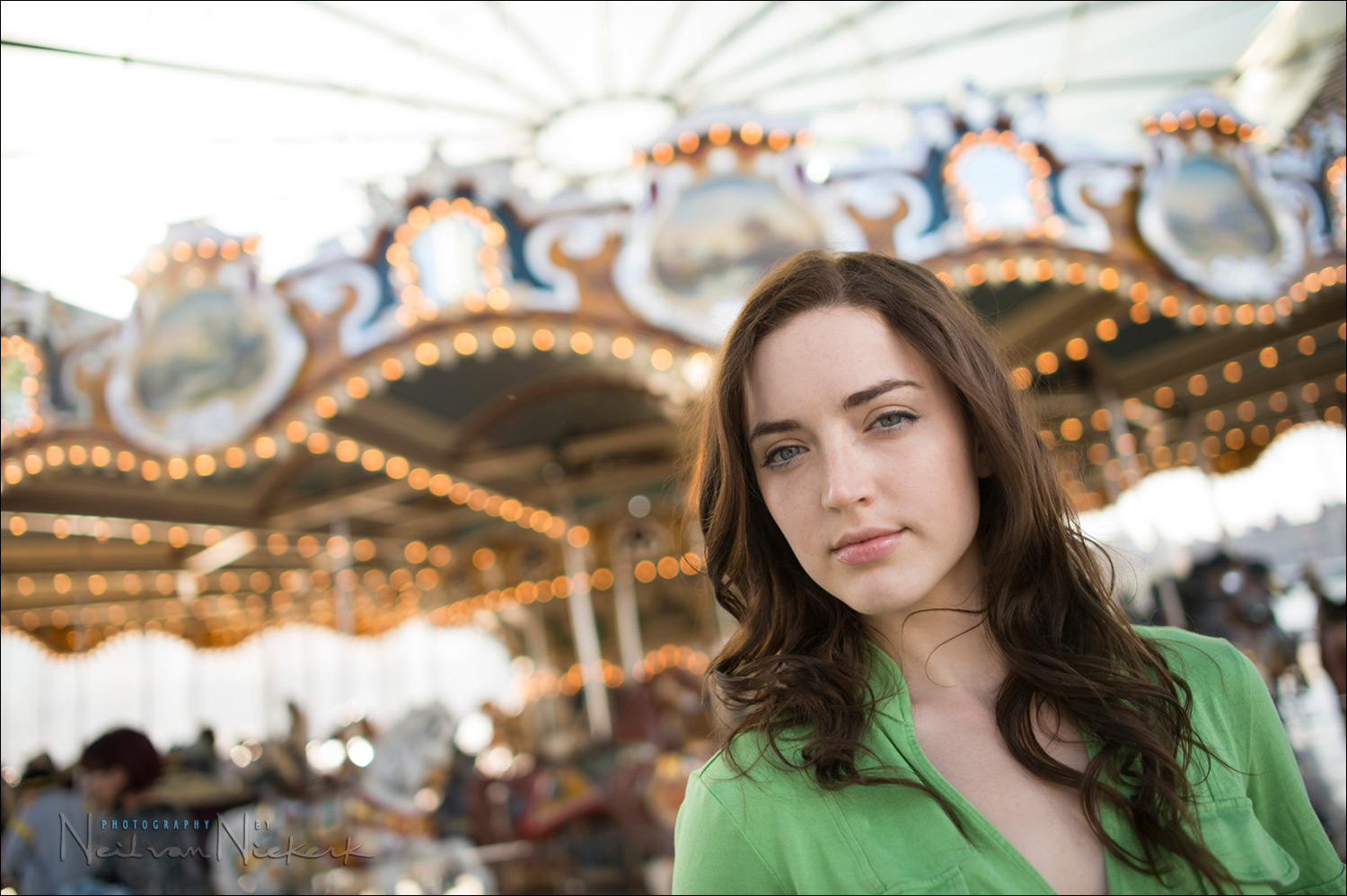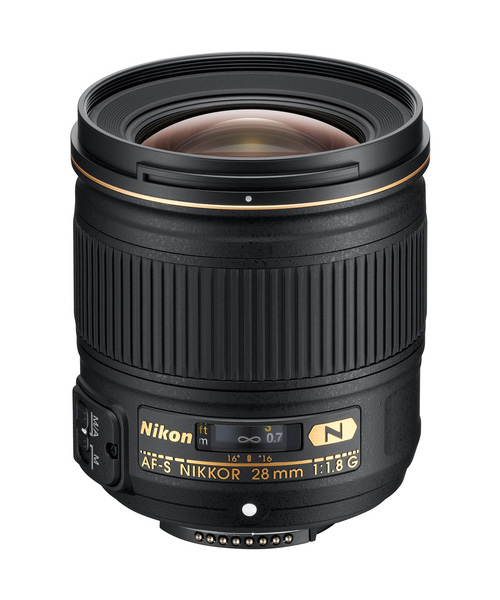review: Nikon AF-S 28mm f/1.8G lens
To test out the Nikon AF-S 28mm f/1.8G (B&H / Amazon), I met up with Anelisa in Brooklyn to try my hand at some environmental portraiture. With such a wide field-of-view, you inevitably have to include the background.
I wanted to show the effect of the shallow depth-of-field of this lens, so I shot at f/1.8 or f/2.0 throughout. When you use a fast (i.e., wide aperture) wide-angle lens, and have sufficient distance between your subject and the background, that shallow depth of field can be used to great effect. It can be tricky though, since wide-angle lenses tend to show a lot of depth-of-field unless we’re specific in how we use them.
This fast prime lens from Nikon is said to deliver superb image quality. It has the renowned Nano Crystal Coat that Nikon uses to reduce ghosting and interior flare. It also has Super Integrated Coating to enhance light transmission and color consistency. The aspheric lens elements minimize coma and other lens aberrations.From the various images I shot, the lens is sharp! Wide-open though, the contrast is reduced, and you will have to adjust for that in post-processing.
Nikon’s Silent Wave Motor (SWM) delivers fast and quiet autofocus. No complaints there. The lens responded fast in auto-focusing on my Nikon D4 camera.
This lens has 7 rounded blades of the lens diaphragm which is intended to smoothly render the out-of-focus areas. In other words, the bokeh is good, according to the literature. To my eye though, the backgrounds could look a little “jittery” and harsh, dependent on the background.
By the way, shallow depth-of-field is not the same thing as bokeh.
(Just in case you are under that impression.)
All the images shown here were shot without additional light. Just the available light.

- camera settings: 1/500 @ f/1.8 @ 200 ISO
- Nikon D4
- Nikon AF-S 28mm f/1.8G (affiliate)
The pick of a sequence of images I shot here. I love how the wind picked up her hair at this moment, with the setting sun adding just a touch of rim-light.

- camera settings: 1/500 @ f/2.0 @ 100 ISO
- Nikon D4
- Nikon AF-S 28mm f/1.8G (affiliate)
With a sequence of photographs here with the sun directly in the frame, I wanted to check how well the lens handles flare – and it controls flare very well. The image doesn’t wash out easily.
Regarding the bokeh of the lens, if you click through to the larger image, you can see the out-of-focus trees on the bottom right-hand side, has a “jittery” or wiry look to them. That’s a sign the bokeh of the lens can be harsh, and not as smooth as would be ideal.

- camera settings: 1/250 @ f/1.8 @ 400 ISO
- Nikon D4
- Nikon AF-S 28mm f/1.8G (affiliate)
The test shots I did of the lens to see how well the edge-to-edge sharpness is (excellent, by the way), and how the distortion appears (minimal, by the way), just isn’t as interesting as a colorful image. So here it is. But really, the lens is crisply sharp.

- camera settings: 1/640 @ f/2.0 @ 800 ISO
- Nikon D4
- Nikon AF-S 28mm f/1.8G (affiliate)
I really liked the way the light reflected off the paving in this area under the Manhattan Bridge Overpass, and I positioned Anelisa into this light.
Regarding the bokeh of the lens, have a look at how it renders the out-of-focus tree on the left-hand side. (Click through to the larger image.) Again, the depth-of-field is shallow, but the bokeh isn’t entirely smooth.

- camera settings: 1/80 @ f/1.8 @ 1600 ISO
- Nikon D4
- Nikon AF-S 28mm f/1.8G (affiliate)
This was a grabshot as we were waiting for something to eat at a coffee-shop in Brooklyn.
As an aside, I have to reveal that Anelisa is actually a geek – the Android phone in her hand is the R2D2 model, and it squeaks and bleeps when it rings!

- camera settings: 1/400 @ f/2.0 @ 100 ISO
- Nikon D4
- Nikon AF-S 28mm f/1.8G (affiliate)
Summary
This lens is superb! It is sharp, and an affordable entry into the realm of fast wide-angle lenses for the Nikon shooter.
Also check out the review of the Nikon AF-S 85mm f/1.8G lens,
and reviews of other Nikon gear.


For portraits, Neil, what’s your preferred framing to minimize facial distortion on a wide angle lens like this one?
Dave
Neil
I’ve loved your images for a while now….but those above really do something for me. That picture taken under the bridge really is top-notch. Thank you for the continued inspiration.
Roy
Thanks for the review Neil. I have been looking at the 35mm f/1.4g for a while now but this seems like it may be an inexpensive alternative.
-b
Hi Neil
Thanks for the post. The tip about Anelisa being a geek adds a dimension indeed!
What technique did you use to measure of the face and blow out the skys – spot metering, walk up-close metering, or something else?
Amit
Amit, by selective exposure metering.
Thanks Neil! Mine just arrived last night and I can’t wait to go out and make some images this weekend at a wedding down in Lancaster!
Just got this lens few day ago and must agree 100 %. It’s superb.
Hello Niel, thanks this review!
What about the “little problem” of focus shift related by CameraLabs?
This one shows it?
Thanks again
Neil, thanks for this informative review. I wondered about the performance of this lens, especially the bokeh- and you answered it.
We purchased the Nikon 85mm f/1.8G and I like it. I find the focus of the 85mm to be slow under low light conditions, but acceptable outdoors. The image quality of the 85mm is good. It’s another new lens you can review.
Very good test, beautiful pictures. Thanks.
I’m waiting for a 1,7/35 Voigtlander-like for Nikon… ;-)
How about if it is compared to 35mm f/1.8g :D
Many thanks for sharing experience!
However, any comments on when it compares with N35 1.4G? Im recently considering on which one I should buy and use as a usual lens with my D4.
I love wide-angle, especially ultra-wide and I used to use 1424, which has been sold however. Instead I might try Sanyo 14mm some day. For now, Im really struggling. Many 28 1.8 users said its 1.8 is not sharp enough and getting better on 2.8 and best on 4.5/5.6. On the other hand, I was told that the problem of Purple Fringing in 28 1.8 is also worse than 35 1.4G.
It’s appreciated if you have done any comparisons and give some suggestions.
amazing.. i want to buy this lens too…
Great images and great review! I actually really like the bokeh from this lens; it’s pleasant and smoothing; even the slightly jittery parts aren’t distracting (like the Nikkor 50mm F1.8D, worst bokeh in the world). Lovely model and great pics.
Very nice review, it is refreshing to read about real world use rather than the usual overly scientific pixel peeping. I am really enjoying using primes in my work recently. Not because I am a prime lens snob, purely because I am much preferring the results compared to those of my zooms (currently I am shooting a the Nikon 85 1.8G and a Sigma 50 1.4). This Nikon 28 is now top of my wish list.
I have learnt a great deal from your 3 books. Hi from England!
Stunning images. Your thoughts on 28mm f1.4e vs the f1.8g? In your opinion, is the e version worth three times the price tag?